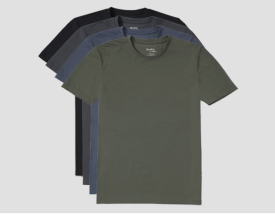Feel Like You’re Sweating More Than You’re Working? You’re Not Alone. Returning to the office after remote life can be nerve-wracking for anyone but for those managing hyperhidrosis or excessive sweating, it’s a whole new challenge.
Sweating through shirts during presentations, interviews, or even quick team meetings can leave you feeling uncomfortable and self-conscious. But here’s the good news: with a few small but smart adjustments, you can sweat-proof your wardrobe and focus on what really matters: doing your best work.
Below are 5 expert-backed, outfit-based strategies to help you stay cool, dry, and confident at work.
1. Choose Technical, Moisture-Wicking Fabrics
Hyperhidrosis and heat management begin with what you wear closest to your skin.
Best Moisture-wicking fabrics actively draw sweat away from the skin, helping it evaporate faster and keeping your outer layer dry. Unlike cotton which absorbs and holds sweat, these materials are designed for people who sweat frequently and need consistent dryness.
Best materials:
● Polyester blends
● Merino wool (lightweight, breathable, odor-resistant)
● Bamboo fabric
● Neat Apparel's proprietary sweat-blocking fabric with maze-like construction
Tip: Use moisture-wicking base layers, even under business attire. They’re invisible under shirts but serve as your first line of defense.
2. Layer Strategically to Hide Sweat (Even in Hot Weather)
Wearing the right combination of layers can actually help you manage sweat better than wearing a single top.
Start with a sweat-resistant undershirt, then build your look with breathable, lightweight materials. This layering helps trap moisture early and minimizes the chance of it soaking through to your outer layer.
Layering tips:
● Summer: Sweat-proof undershirt + breathable dress shirt
● Fall/Winter: Undershirt + sweater or blazer for additional concealment
● Avoid heavy cotton or multiple thick layers that can trap heat
The goal: layers that breathe, not layers that overheat.
3. Choose Sweat-Friendly Colors (Avoid the Usual Traps)
Let’s talk about color. Because color can either work with you or against you.
We all know the pain of wearing light gray or bright colors, only to be betrayed by a giant underarm stain halfway through the day. Smart color choices are your secret weapon.
Stick to these shades:
● Darker tones like navy, charcoal, black: Sweat blends in, not stands out.
● Very light tones like white or pale blue: Less visible moisture contrast.
● Avoid: Gray, bright reds, oranges, neons.
Note on white clothing: Always apply antiperspirant carefully and let it dry—white shirts are prone to yellow stains from aluminum-based products.
4. Be Proactive: Stop Sweat Stains Before They Start
Sweat stains are hard to undo so it’s far easier to prevent them in the first place.
Here’s how to build a proactive sweat-management routine:
Lifestyle Tweaks
● Reduce caffeine and spicy foods
● Manage stress through breathing exercises, meditation, hydration
● Dress with a cooling strategy in mind (looser fits, breathable layers)
● Use prescription-strength antiperspirants with aluminum chloride
● Consider clinical treatments like Botox or iontophoresis (consult a doctor)
● Vitamin B complex: Supports nervous system regulation
● Witch hazel: Natural astringent properties
● Chamomile: Known for calming and sweat-reducing effects
Smart sweat strategy: Prevention = Power. The earlier you take action, the more confidence you’ll have.
5. Invest in Sweat-Resistant, Office-Ready Clothing
Clothing designed specifically for hyperhidrosis can change your workday experience.
Sweat-resistant shirts, undershirts, and even blouses use advanced textiles that:
● Absorb and disperse sweat across larger surface areas
● Prevent stains from reaching outer layers
● Eliminate odor buildup through antimicrobial treatment
Why it matters:
● You stay dry longer.
● You focus more on work and less on discomfort.
● You look sharp—even under pressure.
What should I wear for job interviews if I suffer from excessive sweating?
For job interviews, opt for a sweat-resistant undershirt, a structured blazer, and dark or light-colored tops that help conceal moisture. Avoid gray or fitted fabrics that cling to damp skin. Always test your outfit ahead of time to ensure comfort and appearance under stress.
Are there accessories that can help manage or hide sweat?
Absolutely. Some helpful accessories include: Absorbent dress shields (armpit pads) for underarm sweat, Cooling neck wraps or underscarves and Odor-blocking socks or insoles for foot sweat.
Is excessive sweating at work considered a medical condition?
Yes. Hyperhidrosis is a recognized medical condition that affects millions of people. If your sweating interferes with daily activities, talk to a healthcare provider. There are FDA-approved treatments, lifestyle changes, and support resources that can make a big difference.
Is it better to wear loose or tight clothing when you sweat a lot?
Loose clothing is generally better, especially when made of breathable fabric. It allows more airflow and less friction, reducing sweat visibility. Tight clothes can trap heat and moisture, which leads to discomfort and faster saturation of fabric.
Are there anti-sweat sprays or treatments that work on clothes, not skin?
Yes! There are sweat-repellent sprays and anti-stain fabric treatments you can apply to your clothing. These products help repel moisture, reduce odor absorption, and protect fabrics. Always test on a small patch first to avoid discoloration.
Final Words
Managing hyperhidrosis doesn’t have to mean sacrificing your personal style or your career performance. With these five sweat-proof outfit strategies, you can walk into meetings, presentations, and interviews with more confidence and less stress.
Because when you look good, feel good, and stay dry; everything changes.








